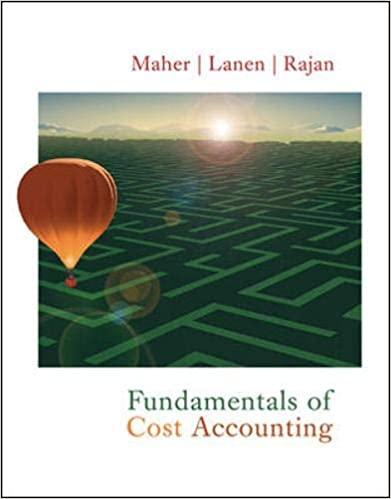Question
Missing Journal Entry information is in new question that has been asked. Please answer this based on new question. [The following information applies to the
Missing Journal Entry information is in new question that has been asked. Please answer this based on new question.
[The following information applies to the questions displayed below.]
Sun Corporation received a charter that authorized the issuance of 85,000 shares of $7 par common stock and 20,000 shares of $75 par, 5 percent cumulative preferred stock. Sun Corporation completed the following transactions during its first two years of operation. Year 1
| January 5 | Sold 12,750 shares of the $7 par common stock for $9 per share. |
|---|---|
| January 12 | Sold 2,000 shares of the 5 percent preferred stock for $85 per share. |
| April 5 | Sold 17,000 shares of the $7 par common stock for $11 per share. |
| December 31 | During the year, earned $319,400 in cash revenue and paid $240,500 for cash operating expenses. |
| December 31 | Declared the cash dividend on the outstanding shares of preferred stock for Year 1. The dividend will be paid on February 15 to stockholders of record on January 10, Year 2. |
| December 31 | Closed the revenue, expense, and dividend accounts to the retained earnings account. |
Year 2
| February 15 | Paid the cash dividend declared on December 31, Year 1. |
|---|---|
| March 3 | Sold 3,000 shares of the $75 par preferred stock for $95 per share. |
| May 5 | Purchased 550 shares of the common stock as treasury stock at $14 per share. |
| December 31 | During the year, earned $249,600 in cash revenues and paid $176,900 for cash operating expenses. |
| December 31 | Declared the annual dividend on the preferred stock and a $0.75 per share dividend on the common stock. |
| December 31 | Closed revenue, expense, and dividend accounts to the retained earnings account. |
Required a. Prepare journal entries for these transactions for Year 1 and Year 2 and post them to T-accounts.


Step by Step Solution
There are 3 Steps involved in it
Step: 1

Get Instant Access to Expert-Tailored Solutions
See step-by-step solutions with expert insights and AI powered tools for academic success
Step: 2

Step: 3

Ace Your Homework with AI
Get the answers you need in no time with our AI-driven, step-by-step assistance
Get Started


